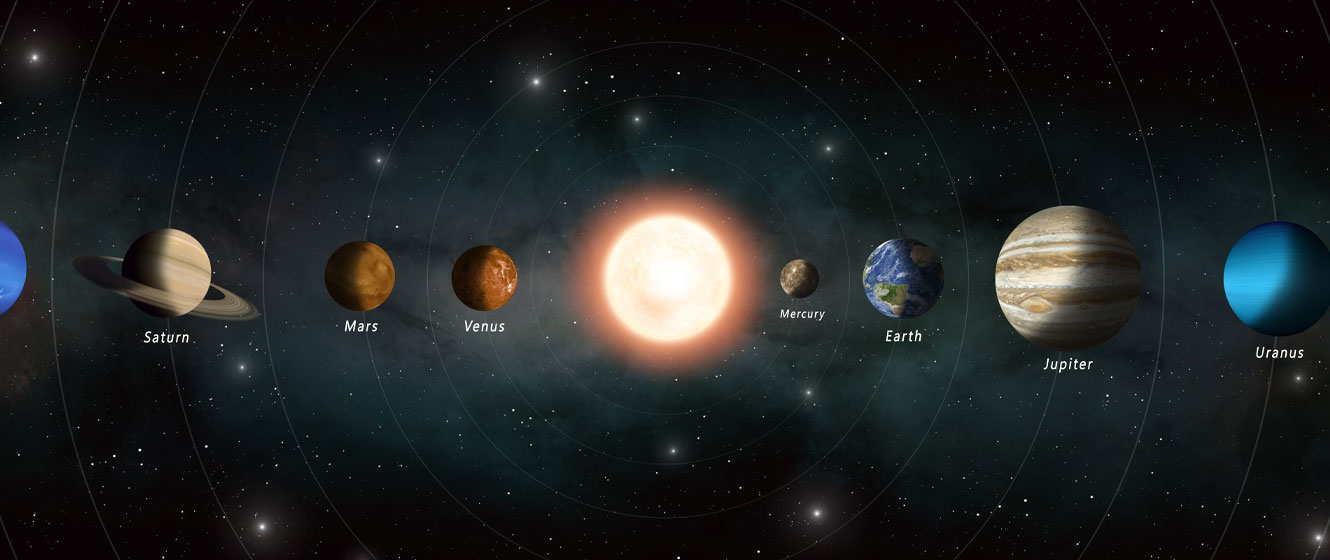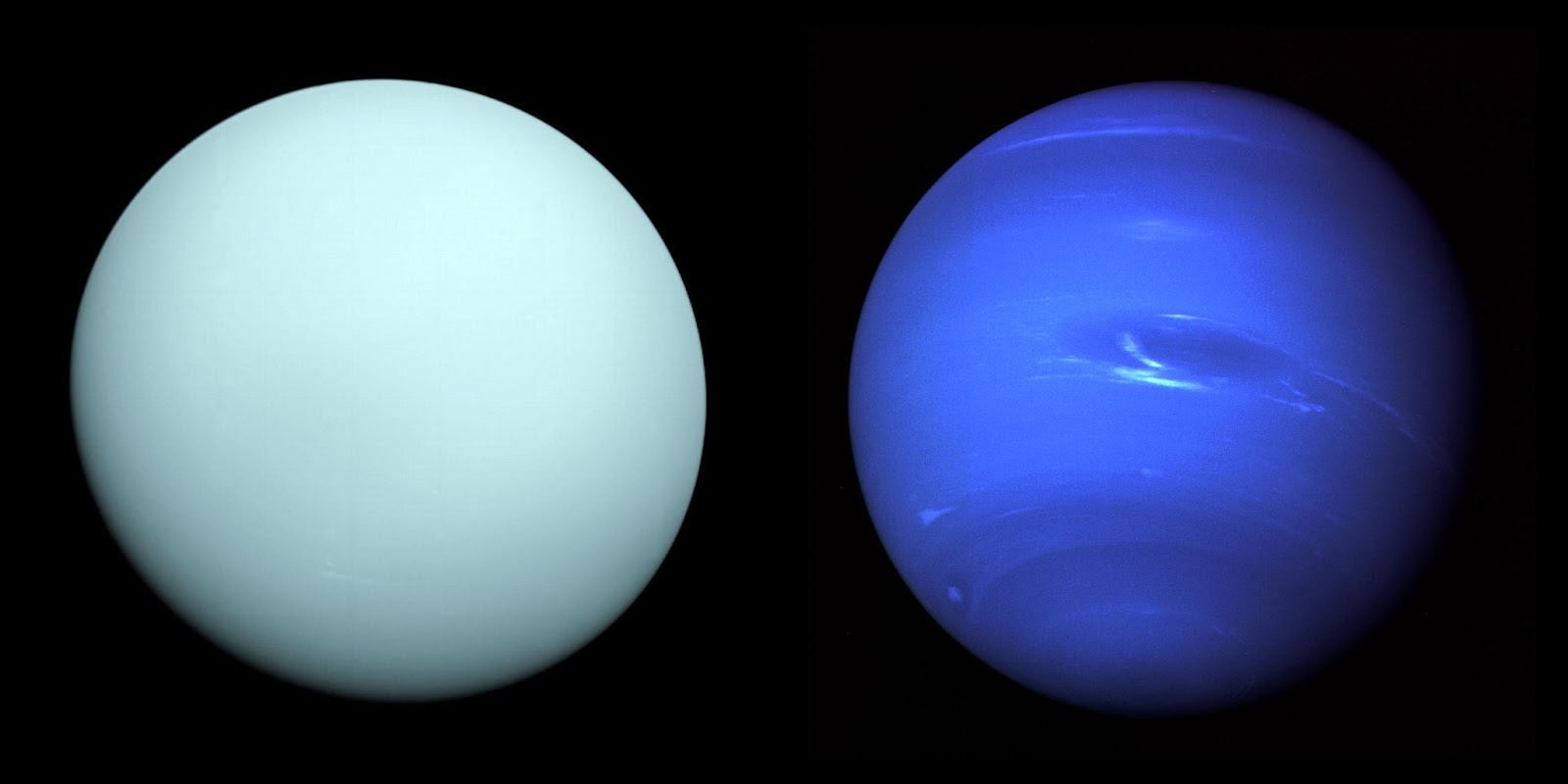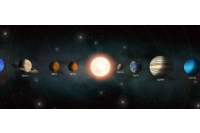
There are eight planets in the solar system (including the Earth), and although you can see the five brightest with the naked eye, you really need a telescope to catch them at their best. Let’s review each one and get an idea of what you can expect to see.
Mercury
Since Mercury is the closest planet to the Sun, it never strays very far from it in the sky and it can be tricky to spot. It’ll be visible for a short time in either the pre-dawn or evening twilight, and it’s often a good idea to wait for the Moon or other bright planet to appear nearby to help you locate it.
Telescopically, both Mercury and Venus will show phases like the Moon. A small telescope is typically enough to show a tiny, brownish disc, but that’s about it. You’ll most likely need a large scope and high magnification to see any hint of surface markings.

Image Credit: NASA Visualization Technology Applications and Development (VTAD)
Venus
Like Mercury, Venus is only visible in either the pre-dawn or evening twilight sky, but unlike its sibling, it can be easily seen as a brilliant, white star for about seven months at a time. Due to its brilliance, it’s best to observe the planet shortly after sunset, when there’s less contrast between the planet and the background sky. Otherwise, the planet can be too bright and you won’t see much.
Experienced astronomers will even track down and observe Venus during the day when there’s the least contrast between the planet and the background sky.
Again, like Mercury, you’ll be able to see phases but its disc is larger and more easily seen. Venus is entirely covered in clouds, but if you want to see any markings in its atmosphere, you’ll need at least a medium-sized scope and a high magnification. Using a red or dark blue filter can help to prise out some details.

Image Credit: NASA
Mars
There’s both good and bad news when it comes to Mars. The good news is that the red planet can look great through a telescope when it’s at its best. The bad news is that this only happens once every two years or so, but when it does, even a small telescope can show a surprising amount of detail.
For example, a magnification of between 50x and 100x is enough to show dark markings on the planet’s surface; you may also be able to catch a glimpse of one of the ice caps. Medium and large scopes will show more detail, with the largest telescopes potentially showing some of the faint lines that were once mistaken for water canals on the surface.

Image Credit: NASA/JPL-Caltech/USGS
Jupiter
Jupiter is arguably the most interesting and accessible to owners of a small telescope. Even binoculars will show its four largest moons - Io, Europa, Ganymede, and Callisto - but almost any telescope will show these and so much more.
At around 30x, Jupiter shows a bright, white conspicuous disc, with one or two brownish bands crossing near its equator. Increasing the magnification to around 100x can also show the planet’s polar regions. If you’re watching the moons, you’ll see them move over the course of a few hours; sometimes they’ll be eclipsed as they disappear into Jupiter’s shadow, while other times you’ll see the shadow of the moon itself as it passes in front of the planet. All this can be seen with almost any sized scope.
As for Jupiter’s famous Great Red Spot, you’ll most likely need a mid to large-sized telescope to have a chance of seeing it. A dark blue filter will help increase the contrast and allow the spot to be more easily seen. A blue filter is also a great option for revealing texture and details in Jupiter’s atmospheric belts and bands.

Image Credit: NASA, ESA, A. Simon (Goddard Space Flight Center), and M.H. Wong (University of California, Berkeley)
Saturn
The jewel in the solar system’s crown, Saturn can be a stunning sight in any sized telescope. A good quality small scope at a low magnification of around 25x can clearly show the rings, with Saturn’s largest moon, Titan, appearing as a starlike point nearby. A magnification of close to 100x will also show a second moon, Rhea, while Tethys and Dione may also be visible.
You might also see some faint bands in the planet’s atmosphere, but they’re nowhere near as prominent as Jupiter’s. It’s a similar story with Saturn’s polar regions, but a larger scope should reveal a little more. Once again, using a blue filter can help increase the contrast of the features and make them a little easier to see.
Lastly, also around 100x, you may see the Cassini Division. This is a gap in Saturn’s rings that was discovered in 1675 by the Italian astronomer Giovanni Cassini and is best seen when the planet’s rings are wide open.

Image Credit: NASA, ESA, A. Simon (Goddard Space Flight Center), M.H. Wong (University of California, Berkeley), and the OPAL Team
Uranus and Neptune
With Pluto now demoted to dwarf planet status, the two most distant planets are Uranus and Neptune. Unfortunately, both are so far away that neither is visible to the naked eye (although experienced observers under clear, dark skies can identify Uranus) and you’ll need some kind of optical aid to locate and observe them.
That said, neither of them appears as anything more than tiny, featureless discs through most telescopes. Uranus glows with a steady pale blue or aquamarine light that helps to make the planet stand out among the background stars. You should start to notice a disc at around 50x.
It’s a similar story with Neptune. It has a distinct, steady blue light but can be easily mistaken for a star. Unlike Uranus, you’ll need to push the magnification up to 150x to see its tiny disc.

Image Credit: NASA/JPL-Caltech
This Article was Last Updated on 07/12/2023

Learn More
Interested in learning more about how to view the planets through your telescope? Not sure where to begin? Check out our Astronomy Hub!












